My Beginners Guide to Sherry
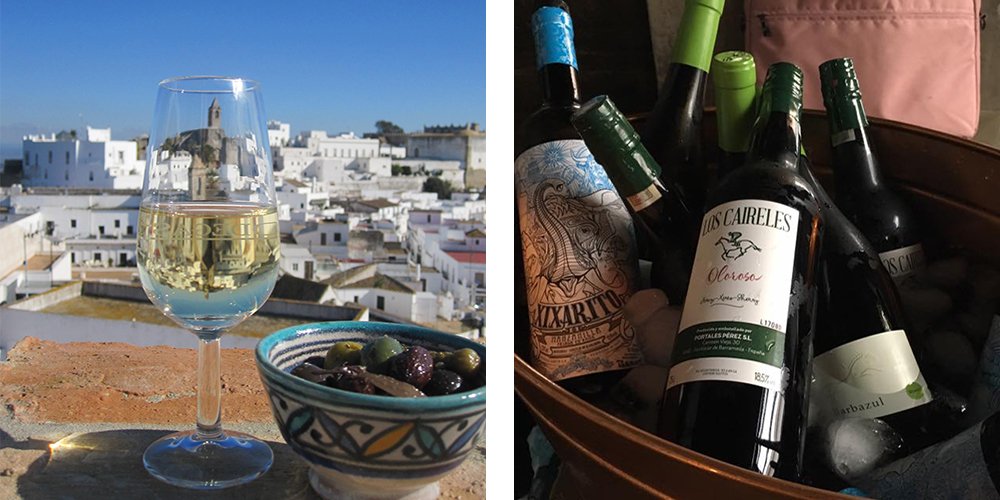
‘What is Sherry? Where does it come from? I want to learn about Sherry’ These were recent questions from a friend compiling an online magazine. And so started, Sherry: The Beginner’s Guide to One of Spain’s Greatest Wines. Sherry really is a pleasure to me. It’s one of the most versatile wines in the world: there is a Sherry to match every type of food – even breakfast when big, juicy raisins, soaked in PX Sherry can be scattered over your porridge. No Spanish cooking holiday can be complete without a daily indulgence in what is, possibly, my favourite wine in the world.
The subject of Sherry is HUGE. It is complicated to get your head around how Sherry is is made. And the more you know about Sherry, the more you discover there is to know.
History
Sherry is one of the oldest wines in the world. It was being made during the time of Moorish occupation of Andalucia until 1231. During Moorish ocupation, Jerez was known as Sherrish. It was only after pirate Sir Francis Drake plundered Cadiz in 1587, bringing back to England with him around 3,000 butts of Sherry, that the British love affair with Sherry started. Although regarded as a pirate, the Spanish admit he was the best salesman Sherry has ever had! Shakespeare referred to the English’s love of ‘sack’ in his Henry IV, 10 years later. Sherry was shipped to the UK for centuries in oak barrels. These barrels in turn were sent to Scotland to age Whisky. Hence the labels on Malts being Oloroso cask aged, PX cask aged etc. For example, for those of you who are fans of malts, Bruichladdich of Islay released a malt where the name of the Sherry House providing the specific Sherry barrel – Fernando de Castilla – on the label. It’s becoming increasingly popular in the whisky industry to
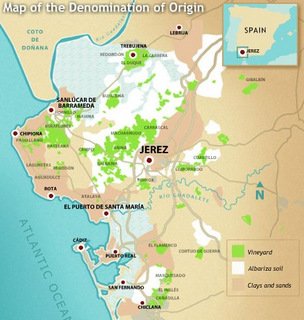 Where is Sherry From?
Where is Sherry From?
All Sherry is from the recognised DO (Denominacion de Origin) of Jerez y Sanlúcar de Barrameda. This unique DO, on the west coast of Andalucia has three towns, Jerez, El Puerto de Santa Maria and Sanlúcar de Barrameda. These three towns form the traditional triangle – hence the term – ‘Sherry Triangle’. Since November 2022, the Sherry DO has extended to include Chiclana in the south, Chipiona to the west & Trebujena to the north. A longer and thiner triangle.
Like Champagne only being called ‘Champagne’ if it is from the AC of Champagne, Sherry can only be from within this Sherry triangle – the DO Jerez y Sanlúcar de Barrameda. It was the very first declared DO in Spain in 1933.
What is a Sherry?
Sherry is a generic term for an aged white wine from DO Jerez. If you were to go into a bar in Andalucia and ask for a Sherry – they’d look at you blankly. You need to ask for it by type.
Remember – all Sherry is made from 3 green grapes only. Palomino, Moscatel and Pedro Ximenez. The Palomino grape gives us all of the dry Sherries.
How is Sherry Made?
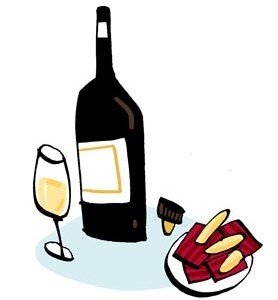 Sherry is aged and blended using a system called solera y criadera. Solera is a process for ageing liquids by fractional blending in such a way that the finished product is a mixture of ages. The solera is the layer of bottom casks and the criadera is formed by the casks cradled above, containing the Sherry which eventually passes into the solera, using fractional blending. The final product is bottled from the solera.
Sherry is aged and blended using a system called solera y criadera. Solera is a process for ageing liquids by fractional blending in such a way that the finished product is a mixture of ages. The solera is the layer of bottom casks and the criadera is formed by the casks cradled above, containing the Sherry which eventually passes into the solera, using fractional blending. The final product is bottled from the solera.
There are some Sherry houses with soleras dating back hundreds of years. And that’s one of the many reasons why a glass of Sherry is so exciting: within every sip, there will be a tiny amount of history.
Some Sherry facts:
- All Sherry is made from green grapes only.
- All Sherry is made from three grape varietals: Palomino, Moscatel and Pedro Ximenez (PX).
- 90% of all Sherry is made from the Palomino grape.
- The colour of Sherry comes from oxidization (think apple without its peel, Fino without flor*) or sun drying (sundried Moscatel and PX raisins).
- Sherry is bottled by extracting a little each year (max. 30% by law) from the solera which creates space for it to be topped up from the criadera above and that in turn will be topped up from the criadera above – until eventually there is space in the top criadera for the new wine to be added.
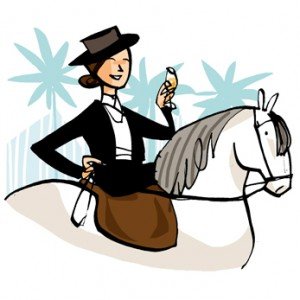
*Flor is the layer of naturally forming yeast that sits on top of Fino and Manzanilla
wine in the casks and protects the wine from the oxygen/air preventing it from becoming oxidized.
Sherry is FAB – Fortified, Aged and Blended:
FORTIFIED: 100% of all Sherry is fortified from a grape spirit. Port is fortified with brandy. This gives stability to what might otherwise be an unstable wine. Sherry is fortified with a spirit made from grapes which then in turn is aged in old Sherry casks, producing Brandy de Jerez.
AGED: All Sherry is aged. The youngest Sherry you will ever drink will be three years old.
BLENDED: 98% of all Sherry is non-vintage; it is a blend of different vintages. Only Oloroso can be a vintage. The ageing system of solera and criadera allows for fractional blending – all vintages meet together as they make their journey to the solera for bottling.
 Please note that because Fino and Manzanillas are made without the use of oxygen, the first exposure to air the wine gets is when you open the bottle. Thus it needs to be treated like a normal wine. If you can visualize a normal bar in UK, the bottle of Tio Pepe is sitting on top alongside the port, Creme de Menthe etc. More often than not, the bottle will have been open for ages and by the time it comes to ordering a glass of it, it will have gone past its best. Anyone trying Tio Pepe for the first time would understandably dislike it. (Polite note to British bar owners: sell more Fino and Manzanillas by the half bottle.)
Please note that because Fino and Manzanillas are made without the use of oxygen, the first exposure to air the wine gets is when you open the bottle. Thus it needs to be treated like a normal wine. If you can visualize a normal bar in UK, the bottle of Tio Pepe is sitting on top alongside the port, Creme de Menthe etc. More often than not, the bottle will have been open for ages and by the time it comes to ordering a glass of it, it will have gone past its best. Anyone trying Tio Pepe for the first time would understandably dislike it. (Polite note to British bar owners: sell more Fino and Manzanillas by the half bottle.)
SHERRY WEEK
Every year, around the beginning of November, Sherry is celebrated globally with many events. International Sherry Week is one of the best times to learn and indulge in Sherry. As a certified Sherry Educator, I can plan special tours during that week for you and your group. Get in touch HERE
Types of Sherry
Fino de Jerez – the driest and youngest of all Sherries (3-5 years old). The newly pressed wine is fortified up to 15% where a layer of protective yeast forms within the 3/4 filled barrels. This layer of yeast not only protects the wine from becoming oxidized, it also eats all the sugar in the wine, hence the bone dryness. Whoever was the first person to look into a Sherry barrel to see a huge layer of FLOR covering the Sherry, thinking ‘’that looks yummy, I think I’ll taste it’’ deserves to be sanctified!
Manzanilla – not to be confused with Chamomile tea! Again a young and bone dry Fino but Manzanilla is from Sanlúcar – and nowhere else. Fino only come from Jerez and El Puerto de Santa Maria.
Amontillado – Starts off as a Fino or Manzanilla for 3/5 years and is then fortified up to 18% and receives further oxidative ageing in barrel before bottling. It’s the air that gives Amontillado its brown tinge.
Oloroso – The wine from the second pressing is immediately fortified to 18% and then entered into barrels where it remains exposed to the oxygen as long as +40 years.
Palo Cortado – This is my favourite Sherry. You can’t make it – it just happens. It starts its life as a Fino/Manzanilla but inexplicably loses its layer of flor and, as a result, is exposed to the air thus requiring further fortification. It becomes an oxidized wine with the richness of Oloroso but the crispness of Amontillado.
Cream Sherry – A typical Cream Sherry is a blend of Oloroso and PX Sherries. Croft Original is made for the British market and is a blend of Fino and Sweet Moscatel.
Pedro Ximenez (PX) – The sweetest of all Sherries, the green PX grape is left to dry in the sun after picking where its juices concentrate before pressing.
 Importance of Air
Importance of Air
The most important element in the ageing of Sherry is air/oxygen. Manzanilla tastes differently to Fino due to the maritime air of Sanlúcar, while the importance of the Poniente and Levante winds of Sherry country in keeping the barrels cool is absolutely paramount.
Sherry & Food Matching
There’s an important saying to bear in mind when you’re matching Sherry with food:
If it swims: Fino and Manzanilla.
If it flies: Amontillado.
If it runs: Oloroso.
Differences between Sherry & Wine
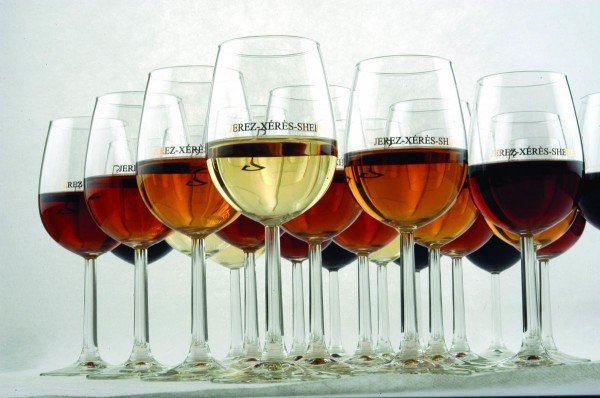
- Non-vintage: 90% of all wine is vintage. As noted above, 98% of sherry is non-vintage – it is a blend of different vintages because of the solera and criadera ageing system.
- Harvest is not important: harvest is crucial to wine but not to Sherry wine. It’s what happens to Sherry wine after the harvest that is the important part – when it enters the FAB (fortified, aged and blended) process.
- Aged above ground: in buildings called Sherry ‘cathedrals’. All wine is aged in caves below ground.
- Fortified: all Sherry is fortified. Few wines apart from Sherry are fortified. Other fortified wines are Marsala, Maderia, Port, and Muscat de Beaune de Veniese.
- Sherry in towns: all Sherry is made and aged in towns. When you visit a Sherry bodega you go into one of the 3 towns. The starting wine is fermented and stored in the vineyards.
All Sherries other than Fino & Manzanilla have been made with the use of oxygen so if kept in the fridge all these other Sherries will last for more than a year. Only Fino & Manzanilla need to be treated like a white wine.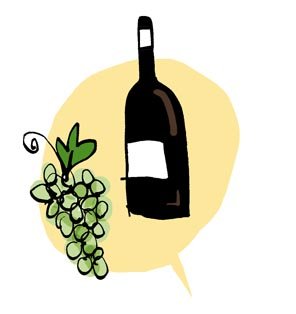
If you’d like to find out more about this great wine of southern Spain, sign up to one of my Sherry tasting classes.
If you are interested in planning a Sherry Tour, get in touch. Annie B is a certified Sherry Educator since 2011.
Words: Anne Manson
Illustrations: Ximena Maier Ximenamaier.com





